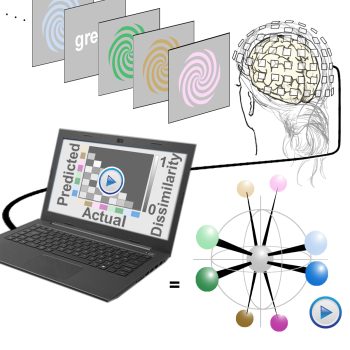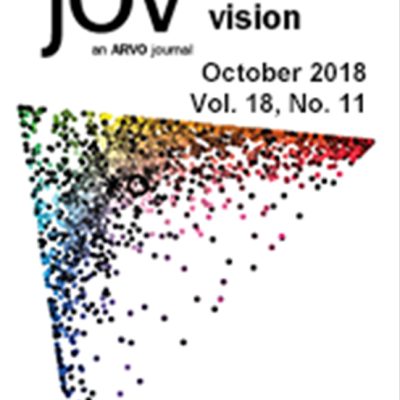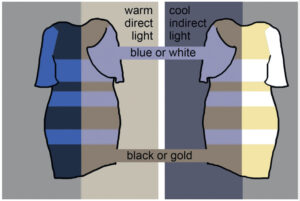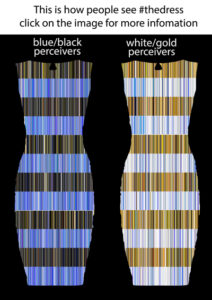A selection of Projects from the Lab
Geometry of Color Space

The lab showed that color can be decoded from brain responses measured with magnetoencephalography, and these responses can be used to recover a geometry of the neural representation of color.
Parallel processing in IT

The lab used color as a tool to uncover an organizational plan of inferior temporal cortex: parallel, multi-stage processing, with color-biased regions sandwiched between place domains and face patches.
Color naming

In collaboration with Ted Gibson’s lab at MIT, the lab discovered a universal pattern among languages in color naming which shows that color naming reflects the behavioral uses of color: languages communicate more efficiently about warm colors than cool colors, which correspond to the color statistics of objects.
Gibson et al, PNAS (2017); Conway et al, Cognition (2020);
This work was reviewed in the Alantic monthly, Discover magazine, Science,
Color statistics of objects

The lab analyzed the colors of the parts of scenes that are labeled as objects, and found that both natural and artificial objects (including food!) are more likely to be warm rather than cool colored.
Colors: fun fact

In 1434/1436, Jan van Eyck painted an angel with rainbow wings, depicting the colors of the wings such that the blue wraps around. We think this is the first representation of color in a circular color space, predating Newton by several hundred years.
#thedress


A photograph of a dress went viral in February 2015. Some people saw it as white and gold and others saw it as blue and black. The lab came up with a theory and published the first scientific explanation of the phenomenon. theshortnews
Adam Rogers (2015), WIRED; Lafer-Sousa et al (2015), Curr Biol; Lafer-Sousa and Conway (2017), Journal of Vision; image from Carroll and Conway (2021), Handbook of Clinical Neurology.
This work was reviewed in the BBC, the New York Times, Discover magazine,